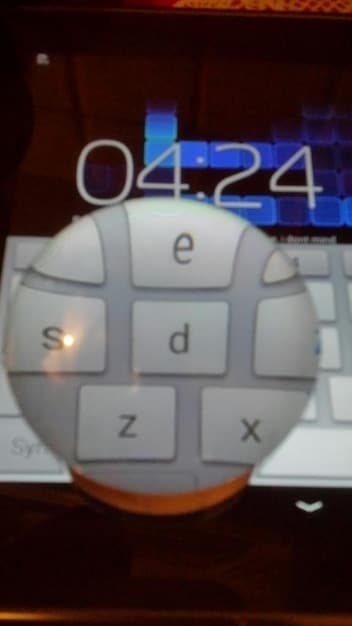Smart Contract Debugging: Tools and Techniques for Error Prevention

Smart contract debugging involves identifying and fixing errors in smart contract code using specialized tools and techniques to ensure security, reliability, and proper functionality.
Smart contracts are revolutionizing digital agreements, but ensuring their foolproof operation is crucial. Smart contract debugging: tools and techniques for finding errors, helps developers identify and resolve vulnerabilities, securing the blockchain ecosystem.
Understanding the Importance of Smart Contract Debugging
Smart contract debugging is a vital process in the development and deployment of decentralized applications (dApps). Flaws in these contracts can lead to significant financial losses and reputational damage. Therefore, a robust debugging strategy is essential.
Effective debugging not only identifies errors but also enhances the overall quality and security of the smart contract. It ensures that the contract behaves as intended under various scenarios, minimizing the risk of exploitation.

Why Debugging Matters
Debugging smart contracts is paramount for preventing unintended consequences and vulnerabilities. Let’s delve into why it is crucial:
- Preventing Financial Losses: Bugs can lead to loss of funds due to unexpected contract behavior.
- Ensuring Security: Debugging helps identify and fix security vulnerabilities, mitigating potential exploits.
- Maintaining Trust: A well-debugged contract ensures trust among users by operating predictably and reliably.
- Cost-Effectiveness: Identifying and resolving errors early in the development cycle is more cost-effective than fixing them post-deployment.
In summary, debugging is not just a technical necessity but also a strategic imperative for ensuring the integrity and reliability of smart contracts.
Essential Tools for Smart Contract Debugging
The smart contract development landscape offers various tools designed to aid in the debugging process. These tools range from integrated development environments (IDEs) to specialized debuggers and analysis platforms.
Selecting the right tools depends on the specific blockchain platform, programming language, and complexity of the smart contract. Here are some essential tools that developers commonly use to find errors in smart contracts.
Remix IDE
Remix IDE is a powerful, browser-based IDE that supports the development, deployment, and debugging of Ethereum smart contracts. Its intuitive interface and real-time feedback make it a favorite among developers.

Key features include:
- Integrated Debugger: Allows developers to step through code, inspect variables, and set breakpoints.
- Static Analysis: Identifies potential security vulnerabilities and coding errors before deployment.
- Deployment Options: Enables easy deployment to test networks and mainnet.
Truffle Debugger
Truffle Debugger is a command-line tool that provides advanced debugging capabilities for smart contracts. It integrates seamlessly with the Truffle development framework, offering a comprehensive debugging experience.
Notable features are:
- Step-by-Step Execution: Developers can execute code line by line to understand its behavior intimately.
- Variable Inspection: Displays the values of variables at each step of execution, aiding in error identification.
- Transaction Tracing: Traces transactions to pinpoint the exact location of errors.
Static Analysis Techniques for Error Detection
Static analysis involves examining the source code of a smart contract without executing it. This technique helps identify potential vulnerabilities, coding errors, and deviations from best practices early in the development cycle.
Implementing static analysis can significantly reduce the risk of deploying flawed contracts. Here are some common static analysis techniques.
Slither
Slither is a static analysis tool specifically designed for Solidity smart contracts. It identifies a wide range of vulnerabilities, including:
Here’s a list of potential security issues Slither can help detect:
- Reentrancy: Detects reentrancy vulnerabilities that can lead to unauthorized fund withdrawals.
- Timestamp Dependence: Identifies issues related to relying on block timestamps for critical logic.
- Arithmetic Overflows/Underflows: Detects potential arithmetic issues that can cause unexpected behavior.
Mythril
Mythril is a security analysis tool that uses symbolic execution to detect vulnerabilities in Ethereum smart contracts. It supports multiple vulnerability types and provides detailed reports to help developers understand and fix identified issues.
Mythril analyzes:
- Integer Overflow: Identifies arithmetic overflow weaknesses.
- Out-of-Gas Conditions: Detects situations where a contract could run out of gas, causing transactions to revert.
- Delegatecall Vulnerabilities: Finds vulnerabilities related to the use of delegatecall.
Dynamic Analysis Methods for Smart Contracts
Dynamic analysis involves executing the smart contract in a controlled environment to observe its behavior and identify potential issues. This technique complements static analysis by providing insights into how the contract behaves during runtime.
Dynamic analysis is crucial for identifying issues that may not be apparent from static code reviews. Here’s a look at some dynamic analysis methods:
Fuzzing
Fuzzing is a dynamic analysis technique that involves providing a smart contract with a wide range of inputs to identify unexpected behavior and vulnerabilities. This method is particularly effective at uncovering edge cases and boundary conditions that other testing methods might miss.
Fuzzing helps in identifying:
- Unexpected Reverts: Uncovers situations where a contract reverts due to unexpected input.
- Gas Limit Issues: Detects inefficiencies in gas usage that could lead to out-of-gas errors.
- Data Corruption: Identifies cases where input data can corrupt the contract’s state.
Symbolic Execution
Symbolic execution involves executing a smart contract with symbolic inputs rather than concrete values. This technique allows developers to explore all possible execution paths and identify potential vulnerabilities.
Symbolic execution is useful for:
- Path Discovery: Reveals all possible execution paths to ensure comprehensive coverage.
- Constraint Solving: Uses constraint solvers to identify inputs that trigger specific vulnerabilities.
- Invariant Checking: Verifies that certain properties hold true throughout the contract’s execution.
Common Smart Contract Vulnerabilities and How to Avoid Them
Smart contracts are susceptible to a variety of vulnerabilities that can compromise their security and integrity. Understanding these vulnerabilities and implementing preventive measures is crucial for building robust smart contracts.
Addressing common contract vulnerabilities is imperative for building an environment of trust and reliability. Here’s how to avoid some of the most common ones:
Reentrancy Attack
A reentrancy attack occurs when a contract recursively calls itself before completing its initial execution. This vulnerability allows attackers to drain funds from the contract.
Integer Overflow/Underflow
These occur when arithmetic operations result in values that exceed the maximum or fall below the minimum representable value for a given data type. This can lead to unexpected and potentially exploitable behavior.
Consider these common pitfalls:
- SafeMath Libraries: Use libraries like SafeMath to prevent integer overflows and underflows by performing arithmetic operations with bounds checking.
- Solidity Versions: Utilize newer versions of Solidity, which have built-in overflow and underflow protection.
Best Practices for Effective Smart Contract Debugging
Effective smart contract debugging relies on a set of best practices that guide developers in identifying and resolving errors efficiently. These practices encompass code quality, testing methodologies, and security considerations.
Adhering to these best practices ensures that smart contracts are robust, secure, and reliable. The points below highlight key areas to concentrate on:
Write Modular and Readable Code
Modular code is easier to understand, test, and debug. Break down complex functionality into smaller, self-contained functions and modules to simplify the debugging process.
Here are some quick tips regarding readability:
- Descriptive Names: Use descriptive names for variables, functions, and contracts to improve code clarity.
- Comments: Add comments to explain complex logic and document important design decisions.
- Consistent Style: Follow a consistent coding style to enhance readability and maintainability.
By embracing these practices, developers can significantly improve the reliability and security of their smart contracts.
| Key Point | Brief Description |
|---|---|
| 🛠️ Debugging Tools | Remix IDE and Truffle Debugger are vital for identifying contract errors. |
| 🔍 Static Analysis | Slither and Mythril scan code for vulnerabilities before deployment. |
| 🧪 Dynamic Analysis | Fuzzing and symbolic execution test contract behavior at runtime. |
| 🛡️ Vulnerability Prevention | Awareness of common vulnerabilities helps avoid costly coding mistakes. |
Frequently Asked Questions
A smart contract debugger is a tool that helps developers identify and fix errors in smart contract code. It allows step-by-step execution, variable inspection, and breakpoint setting.
Static analysis examines code without running it, detecting vulnerabilities like reentrancy or integer overflow early. It enhances security and saves debugging time.
Fuzzing provides random inputs to the contract, revealing hidden bugs and edge cases. This dynamic testing approach complements static analysis for thorough error detection.
Common vulnerabilities include reentrancy attacks, integer overflows or underflows, timestamp dependence, and gas limit issues. Vigilance and secure coding practices are key to prevention.
Best practices involve writing modular, readable code, using automated testing tools, conducting thorough code reviews, and staying updated with the latest security standards and tools in the field.
Conclusion
In conclusion, ensuring the reliability and security of smart contracts hinges on rigorous debugging practices. By employing the right tools, techniques, and best practices, developers can proactively mitigate vulnerabilities, safeguard assets, and foster trust in decentralized applications.





